Machine Learning (ML) is about teaching computers to learn from data and make predictions on new data. It is used nowadays to solve a multitude of real-world problems. Random Forests and Support Vector Machines are two state-of-the-art ML methods that achieve top performance on most classification problems (see Delgado et al. 2014) and they are used by our classification module.
Radars produce signals, which cannot be fed directly into ML algorithms. We have developed a set of features specifically adapted to the radar echos of the BirdScan system. These features represent a necessary signal processing step to link the echo signals to the ML algorithm.
How ML classifiers learn from examples – a short illustration
The scatter plot shows dummy data from two classes (red and blue) with two features (x and y axes). A classifier uses this data to learn how to separate red from blue. In real applications, dozens to thousands of features are typically used. A RFO and a SVM were trained with this dummy data to generate the didactic plots shown below.
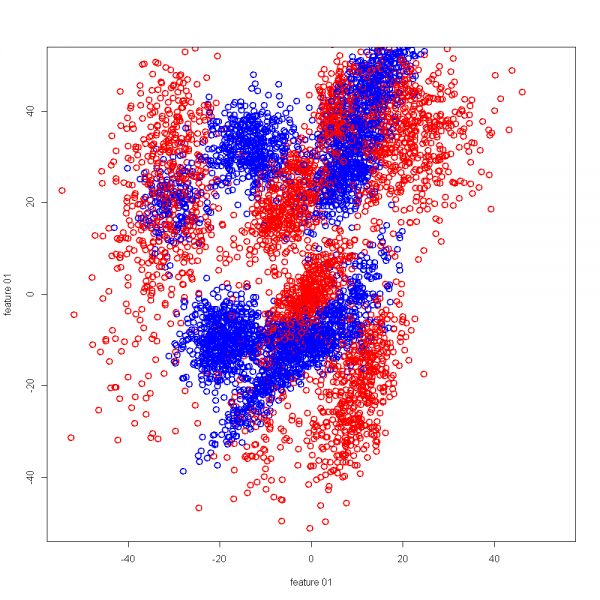
Random Forest (RFO)
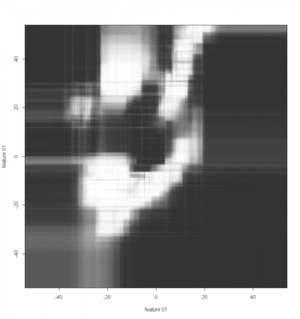
Trained RFO classifier illustrated in greyscale, it can assign predictions to new data points. Here, point falling into dark/light would be classified as “red”/”blue”. The “ghost lines” are typical for Random Forests, which use multiple simple planes that are combined to capture non-linear boundaries.
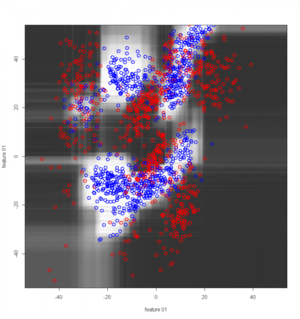
New data points sampled from the same dummy distribution are plotted over for illustration. In real applications such data sets are left out of training and used to quantify the classification performance.
Support Vector Machine (SVM)
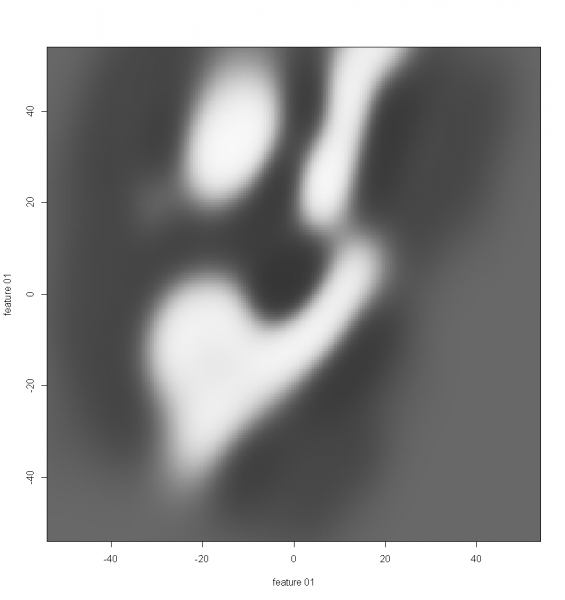
Trained SVM classifier with radial basis kernel illustrated in greyscale, it assigns predictions for new data points similarly as the RFO. This SVM uses multiples “sphere-like structures” to construct separation boundaries, which gives a smooth look to the plot.
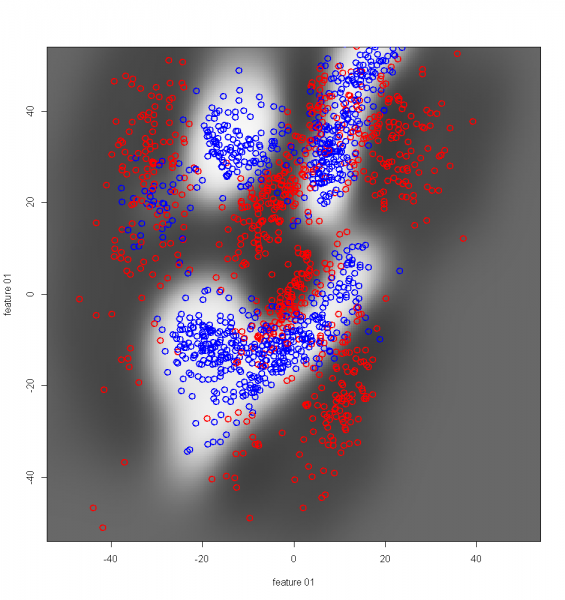
New data points, sampled from the same dummy distribution, are plotted over for illustration. In real applications such data sets are left out of training and used to quantify the classification performance.
Are you looking for a radar solution?
Tell us about your project. We are looking forward to hearing from you.
